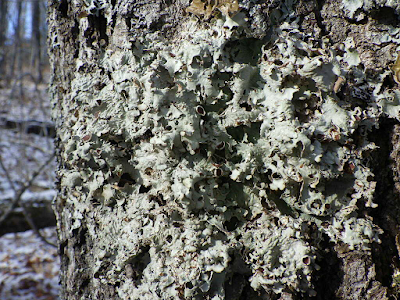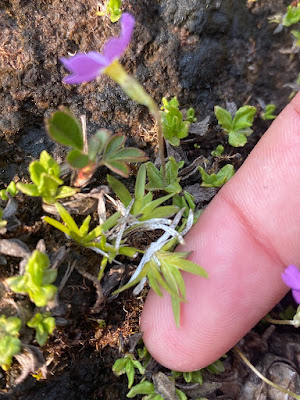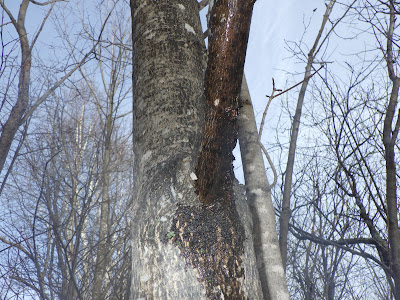Greenwood Fire 2.5 Years Later
I've explored the shoreline of Lake Superior quite extensively, but I haven't done much inland exploring of the area. This recent adventure (and more to come) is an attempt to fix that. I drove a loop starting at Wolf Ridge, out to Forest Service Hwy 15, and returning on State Hwy 1. I've been up near Isabella only a handful of times (mostly for our winter lynx tracking seminar), so for the most part this area was completely new to me.
Of course I stopped multiple times. Driving up Hwy 15 there were quite a few older white pines growing mere inches from the road sometimes. I got out at a few sections of woods with really large ones to stop and appreciate them and explore the lichens growing on them.
At some point I noticed some older white cedars a ways off on the left. Once I stumbled back their through all the raspberry thicks I found a nice peatland. Luckily more of these plants are evergreens, so I could appreciate the mosses and some other shrubs. At this time of year though there really isn't much vegetation, so I spent a lot of time appreciating the lichens again.
As I kept driving I passed Greenwood Lake. I knew it was somewhat local based on hearing about the fire but had no idea of where it actually was. Sure enough the signs of the fire were apparent as I continued driving. Lots of burned and standing dead trees, with some of the larger white pines surviving along with areas near smaller lakes and streams. The forest service also seems to have done some logging. This forest for sure has and will continue to change. I was mostly distracted by looking up at the large, statuesque dead trees, but spent some time looking at the ground as well. I'm guessing all the shade-loving plants like twinflower are either just barely eking out a living due to sun stress or more likely completely gone. Most of the lichens seem to have been cooked (at least the ones low enough for me to see). However, I saw many jack and white pine saplings that I'm sure are thriving in the full sun. I didn't see any blueberry shrubs, but again I wasn't really looking. I'm sure all these pioneer species have already started taking off. I wonder how all the insects, fungi and cavity nesters like woodpeckers will respond to all this dead wood.
I'm excited to come back to this area later in the spring and/or summer to see how things change. It will be cool to see and document the stages of succession. What will this forest look like in 3 months, 3 years, 3 decades?



Comments
Post a Comment